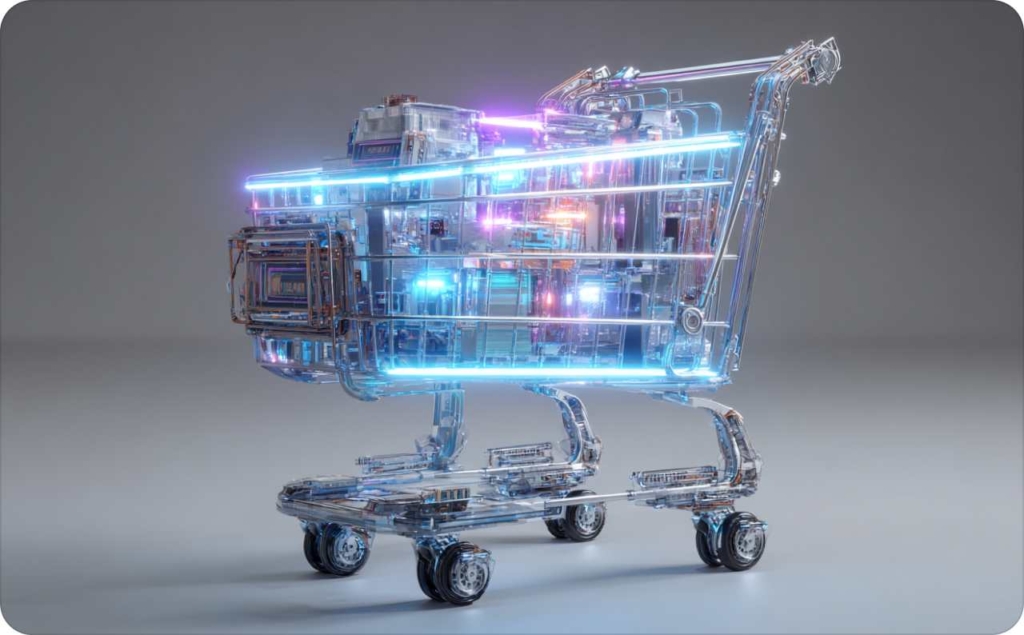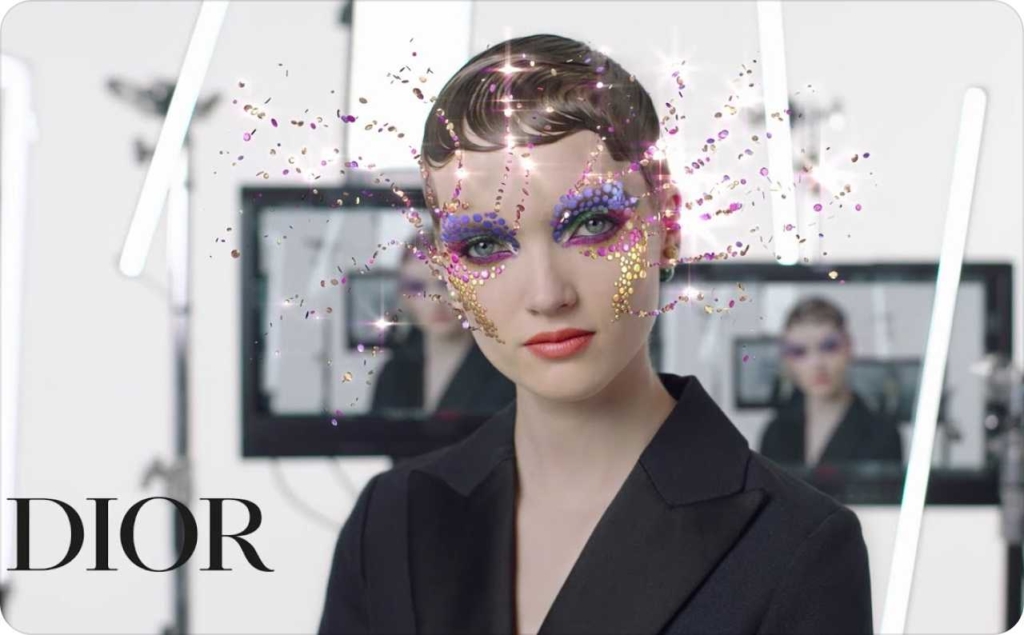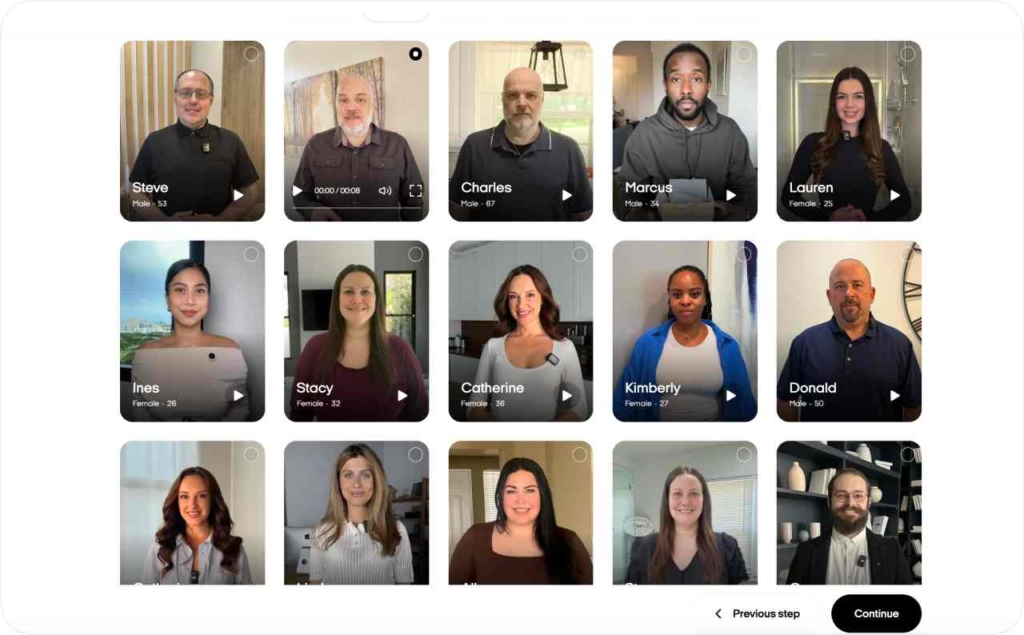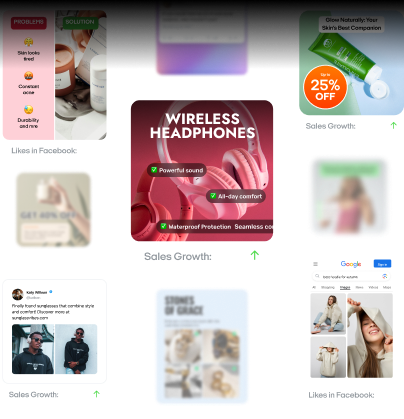How to use AI commercials for faster and smarter ads in 2025
Boost ad performance in 2025 with AI commercials. Learn how to create faster, smarter, and more cost-effective campaigns using AI tools.
Ad campaigns used to take weeks of planning, scripting, and production. Now, thanks to AI commercials, brands can launch fully tailored video ads in hours without compromising precision or scale.
This shift is more than a trend. It’s a full-scale transformation powered by artificial intelligence, machine learning, and creative automation. Marketers are no longer asking if they should use AI — they’re trying to figure out how to integrate it without losing control over voice, story, or strategy.
In May 2024, many marketers around the world said that using generative AI for social media marketing has increased their efficiency. This shows how much of a difference AI can make for marketers who want to create ads more quickly and effectively.
As AI-generated ads continue to evolve, they promise faster turnarounds, deeper personalization, and real-time optimization. But they also introduce challenges: from algorithmic bias and data ethics to the growing tension between machine logic and human emotion.In this guide, you’ll learn how AI commercials work, how they’re transforming the creative landscape, and what it takes to launch effective campaigns using AI tools. Whether you’re testing your first automated ad or leading an enterprise brand overhaul, the future is already here.

What are AI commercials?
AI commercials automates ad production, from scriptwriting and design to optimizing performance, using machine learning and generative AI. This smarter option helps your team scale output without compromising quality, boosting efficiency across multiple channels.
AI-generated ads use data, pattern recognition, and creative automation to tailor content based on audience behavior, performance trends, and market signals. Tools analyze what messages resonate, ensuring campaigns are launched with minimal friction and optimized, improving relevance and engagement.
An AI commercial uses a stack of technologies, reducing the work of a production team. Data analytics reveal what your audience cares about. Generative models create dozens of content versions. As your campaign runs, machine learning adjusts formats, tones, and placements to match audience expectations.
This gives you speed, scale, and sharper relevance. You can move from concept to campaign in hours. You can customize a creative for five audience segments instead of one. And you can cut costs without cutting quality. It’s not about removing people from the process. It’s about giving teams the tools to do more with less guesswork.
How do AI commercials work?
AI commercials run on a sequence of data-driven processes that mirror the decisions you’d make, just faster and with more precision.
It starts with data analysis. AI engines process audience behavior, past interactions, demographics, and campaign history. This isn’t just about segmentation — it’s about mapping intent to message.
With that data in place, generative AI builds creative assets. That includes script variations, visual layouts, localized voiceovers, and social media formats.
From there, the system runs simulations to identify the top-performing combinations. Predictive analytics determines which versions will likely get the best results. A/B variants are tested or modeled against past data before the campaign even goes live.
Once live, real-time optimization adjusts campaigns based on click-through rates, engagement, and conversions. It shifts budgets, changes visuals, or regenerates copy as needed. Platforms like Google Ads apply this logic at scale, ensuring your message remains sharp and relevant across all environments.
The result is a self-adjusting, AI-powered ad pipeline. It replaces static production with constant iteration. And it does it without sacrificing message quality, brand integrity, or creative nuance — if you set it up right.
How AI commercials can help your business
You’re expected to deliver campaigns faster, across more platforms, with fewer resources. That pressure leads to trade-offs: either sacrifice quality or blow the budget. AI commercials change that equation by giving you faster production, smarter automation, and room to stay creative without drowning in execution.
You don’t just save time — you gain control over scale, targeting, and creative precision. AI gives you more than efficiency. It unlocks a new way to build and adapt campaigns at speed.
Save time, scale quickly, and cut costs
Production timelines drop from weeks to hours. Zeely AI reduces video production time by up to 97% and cuts costs by 20 times. You can create AI commercials just in 7 minutes! That allows your team to spend less time on execution and more on shaping your brand message. You shift the focus of your creatives to direction while the system handles execution.
You can launch dozens of ad variations for different audiences and formats, without a larger team. Microsoft’s ad platform already does this. Their AI-driven system produces and optimizes ads that drive up to 69% more clicks and 76% more conversions. Every asset adapts in real time, tested and refined as campaigns unfold.
You’re not guessing what might work. You’re launching with performance data at your back and campaign improvements already in motion.

Photo source: Levi sstraus & Co.
Target the right people with personalized ads
Relevance wins. AI makes it possible to personalize everything — from tone and visuals to copy and timing — based on who’s watching, what they’ve done, and what they want next.
Tools like Meta’s Advantage+ Creative dynamically tailor visuals and messaging to individual users. Your ads shift on the fly, guided by behavior, platform, and device context. That means one campaign can land differently for every person who sees it, and feel like it was made just for them.
Localization is built in. Global brands can generate content in multiple languages and formats simultaneously. This isn’t just translation. The AI adapts visual tone and regional messaging for different markets.
Campaigns that use this level of personalization aren’t just noticed — they drive action. For example, campaigns with personalized CTAs convert 202% better. It’s not about gimmicks. It’s about getting the right message to the right person at the right time.
Make smarter creative decisions with AI
Guesswork slows you down and wastes budget. AI replaces that with pattern recognition and instant feedback loops.
You can test 10 versions of a headline, image, or call-to-action at once. The AI monitors real-time performance, identifies what clicks, and drops what doesn’t. Instead of a single creative decision, you get a continuous optimization loop that improves every hour your campaign runs.
Predictive analytics goes beyond A/B testing. The system forecasts performance outcomes before you even hit publish. That means fewer misfires, faster pivots, and stronger results from the start.
Creativity doesn’t disappear. It gets sharper. Your team focuses on ideas that matter, while the data shapes execution. You’re not handing off control — you’re gaining creative precision and campaign efficiency.
Challenges you might face with AI commercials
Marketers often worry about generic messaging, loss of creative control, or crossing ethical boundaries. These concerns aren’t just theoretical. In a global survey from January 2025, 54% of marketers said they were concerned about losing the human touch when using artificial intelligence in ad campaigns.
You can’t afford to ignore these risks. But with the right approach, you can stay in control, protect your brand, and use AI to amplify — not replace — your creative vision.
Keeping your brand voice authentic with AI
Keeping your brand voice intact is non-negotiable. One-size-fits-all copy erodes trust fast. If AI starts producing generic content, you risk sounding like everyone else. The solution isn’t turning the AI off — it’s training it better.
Feed the system with the right inputs: past campaigns, brand manifestos, voice guidelines, specific tone rules, and product-specific language. That foundation gives the AI the context it needs to produce content that sounds like your brand.
This is where human oversight plays a defining role. Your team guides the process, makes final approvals, and protects the creative DNA that sets you apart. With proper inputs and strategic reviews, you prevent generic outputs and maintain narrative consistency across channels.

Photo source: Dior
Addressing ethical and privacy concerns in AI
Using AI to target audiences and generate content means working with personal data. That comes with real responsibility. GDPR and similar laws aren’t just red tape — they’re legal boundaries that protect users and keep brands accountable.
Bias is another issue. If the training data is flawed, your ads can reflect and even reinforce stereotypes. AI doesn’t think. It mirrors the patterns in its input. If your data isn’t diverse, your output won’t be either, and the damage to consumer trust can be immediate and lasting.
Tackling this starts with responsible data use. Know what data you’re collecting, where it’s stored, and how it’s applied in content creation. Be transparent about how the system works and how personal information is used.
Run regular audits. Ask your vendors for transparent algorithms. Make your AI policies public. Following existing regulatory frameworks isn’t optional — it’s essential to maintaining credibility and public confidence.
How to balance AI and human creativity
Creative depth doesn’t come from automation — it comes from people. It’s fair to worry that AI could replace human storytelling, but that’s something that can be prevented. The best work comes from a hybrid strategy where automation supports creativity, not the other way around.
Let AI handle volume: iterations, rewrites, layout testing, and versioning across channels. That frees your creative team to think bigger, push boundaries, and chase ideas worth remembering.
Your creative directors shift from content makers to content curators. They use AI to generate fast options, then choose, refine, and elevate the best ones into emotionally resonant campaigns. That process doesn’t limit originality — it multiplies it.
This is where creative collaboration between human and machine hits full stride. You get the best of both: speed and intuition, data and instinct. This creative fusion unlocks ideas you might have missed. It also gets you to winning concepts faster, with confidence backed by performance data.
How AI commercials and human-created ads work together
Marketers deciding between AI commercials and human-created commercials are balancing creative integrity with production speed. These aren’t opposing methods. They serve different roles depending on the type of message, timeline, and channel.
How human and AI storytelling differ
Human-made storytelling carries emotional weight. It’s shaped by real experience, lived values, and cultural understanding. That depth is difficult to recreate with automation alone. A well-crafted brand film draws on moments that connect beyond logic. AI isn’t there yet.
But AI handles repetition, formatting, and output volume far better than humans. It can generate dozens of content variations in minutes and adjust them by audience, language, or platform. This makes it ideal for short-form, performance-driven assets, especially when the message is already defined.
Many marketing teams are combining both. You lead with human direction — set the tone, core message, and brand structure. Then use AI to extend reach, test headlines, build variant versions, or scale visual themes. Creative directors stay in control. The system speeds up production and provides optional paths you can refine.
This method works whether you’re a large enterprise or a small in-house team. Modern AI tools are accessible, fast to deploy, and designed to work within your creative workflow. You don’t need a dedicated AI team. You need clear direction, brand standards, and time-saving tools.
How AI shortens production time and saves money
Manual production takes time. Shooting, editing, approvals, and reshoots can drag out timelines, especially for multi-market campaigns. AI production flips that model. You can move from creative brief to live campaign in hours, not weeks.
Automated systems generate assets on demand, adapt messaging by geography, and optimize performance mid-campaign. This cuts production spend and shortens go-to-market time. Teams use this time savings to test more, launch faster, and allocate budget toward outcomes, not process.
AI lets you produce more without hiring more. That’s helpful when managing multiple campaigns or needing constant refreshes. But speed alone doesn’t guarantee quality. Automation can misread tone or miss cultural nuance. That’s why brands set clear boundaries: what AI can do, and where human review is non-negotiable.
Used correctly, this model lowers cost-per-asset, sharpens ROI tracking, and allows for frequent testing without compromising the message. The goal isn’t just efficiency. It’s creative that performs and keeps improving with every iteration.
Future trends in AI commercials
Advertising is moving into new territory. What worked a year ago may already be outdated. To keep campaigns sharp and relevant, marketers are tapping into the next wave of AI-powered advertising, driven by interaction, automation, and real-time intelligence.
New technologies shaping the future of ads
New formats are no longer limited to static visuals or one-way messaging. Immersive technologies are redefining how consumers connect with content. Augmented reality, virtual reality, and voice-based AI are already influencing how leading brands run campaigns.
People can now test products digitally, whether placing a virtual chair in their living room or trying on shoes before clicking “buy.” These experiences are made possible through AR-enhanced ads that blend product interaction with everyday environments.
Voice-enabled AI adds another value. Ads that respond through smart speakers or connected TVs are now prompting direct interaction. A viewer can speak a question aloud and receive an answer from the ad. This creates a true dialogue between brand and consumer.
Interactive TV commercials go further. They allow viewers to navigate product demos, select content paths, or trigger live responses. These formats give your audience control and deepen their connection to the message.
You don’t need to overhaul your media strategy all at once. Launching a test campaign with a single immersive format gives you measurable data on brand perception, engagement time, and purchase behavior. These early signals guide future investments and reduce creative risk.
By exploring next-gen ad innovations now, you’re not just adding a tech layer — you’re building creative infrastructure that’s responsive, flexible, and designed to grow.
Predicting Trends and Adapting Your Campaigns in Real-Time
Campaigns are used to launch, run, and end. Today, they adjust while live. That shift comes from predictive analytics and real-time adaptation — tools that let your ads stay aligned with audience behavior from start to finish.
Predictive models analyze patterns across large datasets and reveal what’s likely to work before you even go live. They suggest which creative combinations — copy, visuals, timing — are most likely to perform. This gives your team a head start on what to test and where to focus creative energy.
Once the campaign launches, real-time data updates the content on the fly. Ads can change headlines, product shots, or calls to action depending on the viewer’s location, device, browsing behavior, or even the weather. A winter jacket might appear in colder cities, while beachwear shows in warmer regions.
This process, powered by dynamic content and algorithmic optimization, increases relevance. Campaigns adjust continuously. Ads respond to the moment instead of staying frozen in a launch version.
For retail, this could mean promoting products that are actually in stock in each region. For travel, pricing and dates can shift based on availability and demand. These updates not only improve engagement but also reduce waste.
The loop keeps running. Creatives improve with every interaction. Your team gets faster feedback, which helps refine performance goals, ad structure, and storytelling logic. Adaptive strategies allow you to experiment more and react faster — all while staying on brand.
How to get started with AI commercials
Bringing AI into your advertising workflow doesn’t require a total overhaul — but it does call for clarity, structure, and the right tools. The goal isn’t just automation. It’s smarter campaigns, faster output, and more meaningful engagement, all without losing your brand narrative or creative integrity.
Steps to set up your AI campaign
To start, evaluate your team’s current skill set and available resources. This internal check-in gives you a clear view of where you are and what needs to happen next. Successful implementation strategies depend on knowing your strengths and filling the gaps with purpose, not pressure.
Set specific, measurable goals. Broad ambitions like “better ads” won’t cut it. Define exactly what success looks like. That might be shortening the time spent on creative production for regional campaigns, or boosting click-through rates by using dynamic visuals tailored to each audience segment.
Once your goals are set, choose AI platforms that align with them. For personalization, select tools with strong real-time optimization. For speed, go for platforms supporting rapid asset generation. Let AI assist, not replace, and ensure human oversight at every stage, from content prompting to asset review.
You’ll also need to stay alert to AI bias. Algorithms can skew results if left unchecked. Make it part of your process to monitor content output, targeting behavior, and audience response for anything that feels off-brand or inequitable. Protect your audience, your message, and your standards.
Next, turn to your data. AI tools can only function as well as the data you feed them. Clean, consistent, and well-organized datasets are non-negotiable. Standardize formats, ensure relevance, and remove outdated or duplicated entries. Good data isn’t just an advantage — it’s the foundation.
Finally, stay committed to measuring outcomes. Go beyond A/B testing. Use AI’s analytical tools to uncover performance trends, behavioral shifts, and message sequencing effectiveness. This continuous refinement gives you real insight into what’s working — and why.
Following these principles helps you implement AI commercials with confidence. You’ll scale smarter, spend more efficiently, and preserve the creative control your brand depends on.
Choosing the right AI tools for your ads
Finding the right AI advertising software can feel overwhelming. The market is full of tools claiming speed, automation, or intelligence — but not all deliver what your campaign actually needs. Knowing what to look for simplifies the process and helps you find a tool that will grow with you.
Zeely AI is an all-in-one advertising solution for small businesses and teams needing to quickly produce high volumes of ad creatives. Simply paste a product link, choose templates, and generate bulk static ads creatives. You can also create UGC-style videos with lifelike AI avatars, using AI-written scripts based on marketing frameworks.

For campaigns centered around connected TV, MNTN offers powerful tools. It’s built to manage performance TV end-to-end, from production to reporting. Teams appreciate its transparency, self-serve functionality, and structured workflows..
Social platforms are also evolving quickly. Meta’s AI Sandbox — part of the Advantage suite — allows you to generate creative assets directly within the Meta ecosystem. Its integration with campaign tools makes it easier to scale testing and variation without leaving your existing stack.
When reviewing tools, go beyond the interface and pricing. Consider scalability — ensure the platform can handle increased complexity as your campaign grows. Also, evaluate the level of vendor support available during setup and integration to ensure smooth implementation and ongoing success.
Also, factor in your current infrastructure. If you rely on marketing automation tools, choose platforms with solid APIs and native connectors. This reduces friction and ensures you’re not duplicating work or introducing bottlenecks in your process.
Adopting the right tools doesn’t just solve workflow issues. It opens up new creative possibilities and positions your team for long-term success. Choose solutions that complement your goals and elevate your overall digital transformation efforts.
Why you should embrace AI commercials
The future of AI commercials is a transformation, not just an innovation. As technology advances, AI-driven tools scale creative production, enhance targeting, and optimize budget allocation. To stay competitive, marketers must embrace this shift for dynamic, immersive advertising opportunities.
By integrating AI into your advertising strategy, you’re not just optimizing your campaigns; you’re creating a foundation for long-term success in an ever-evolving market.
Start small, experiment with immersive experiences, and measure your success along the way. With AI, your brand can build deeper connections, reach wider audiences, and drive stronger ROI.
The next step is clear: take action. Invest in AI, test new tools, and continuously refine your approach. The future of AI commercials is here, and the time to lead is now.
Also recommended



